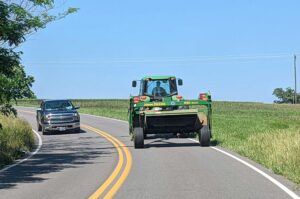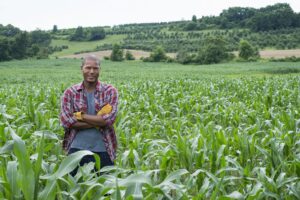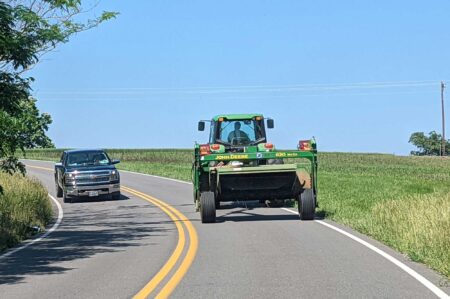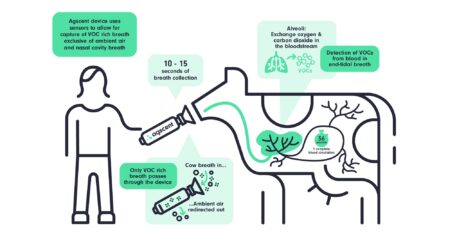Senate Republicans are still working through a few major issues as they continue trying to pass the reconciliation bill by President Trump’s July 4 deadline. Sen. Raphael Warnock, the only southern Democrat on the Senate Ag Committee, discusses how he thinks the bill’s treatment of SNAP, Medicaid, and Inflation Reduction Act programs could hurt rural America.
Then, Jacqlyn Schneider with FGS Global discusses how conservation funding and the broader farm bill coalition could be affected by reconciliation, and Rachel Sheffield from the Heritage Foundation discusses the more aggressive SNAP work requirements.
Watch the Episode
“Want to receive Newsmakers in your inbox every week? Sign up!”
Read the Transcript
Please note: This transcript has not been edited.
Lydia Johnson: Welcome to Agri-Pulse Newsmakers where we aim to take you to the heart of ag policy. I’m your host, Lydia Johnson. This week we’re joined by Senate Ag Committee Member, Raphael Warnock, who discusses cuts to the Supplemental Nutrition Assistance Program and Medicaid included in the reconciliation bill, as well as rescinding the Inflation Reduction Act funding. But first, here’s this week’s headlines.
The House Appropriations Committee advanced the Agriculture and Food and Drug Administration funding bill. After a lengthy recess, the $25.5 billion bill includes funding for both agencies for the next fiscal year, over a billion dollars in spending below the fiscal 2025 level. Notably, a manager’s amendment was adopted to prevent the transition of the Food for Peace food aid program from the State Department into USDA. The committee also approved an amendment that would expand a study on the feasibility of a buy American requirement, and the Supplemental Nutrition Assistance Program to include the WIC program. Texas governor, Greg Abbott, is the latest state governor to enact MAHA-inspired legislation. He signed SB25, the Make Texas Healthy Again bill. The new law requires food manufacturers to add a warning label to products that include 1 of 44 ingredients. These include food dyes and additives that are banned in other countries, but do have federal approval. This bill would kick in starting in 2027. Other state leaders across the country have requested waivers to restrict certain foods from the Supplemental Nutrition Assistance Program. So far, USDA has approved six of these waivers, meaning those states can restrict items like soda, candy, and energy drinks.
Republican lawmakers are continuing to push ahead to meet President Donald Trump’s July 4th deadline for passing a sweeping budget reconciliation bill, dubbed the one big, beautiful bill. Senate Republicans have been struggling with a proposal to help pay for the bill through cuts to Medicaid, a program that’s especially important in rural areas. The National Rural Health Association estimates rural hospitals would lose an average of 21 cents for every dollar they receive from Medicaid under a proposal by Republicans on the Senate Finance Committee. The Senate Ag Committee found their $144 billion in spending reductions over 10 years through cuts to the Supplemental Nutrition Assistance Program. The legislation would provide $67 billion more for farm programs, including an increase in reference prices and higher crop insurance subsidies. Senator Raphael Warnock is a member of the Senate Ag Committee. He says the expanded work requirements and a new state SNAP cost share program included in the reconciliation bill will affect rural Georgians.
Raphael Warnock: This is not about work, that’s not what they’re up to. They ought to call it work reporting requirements. This is about cutting people’s benefits, and rural communities will be especially hard hit by these cuts in SNAP, about $200 billion. In our rural communities especially, we see a huge portions of that population that count on SNAP, that count on Medicaid. And this will be a drag on those rural economies. The rural grocery stores, rural hospitals. This big, ugly bill is bad news for Georgia families, bad news for Georgia farmers, bad news for the Georgia economy. And I plan to do everything I can to slow it down and help us to get to a better place here.
Lydia Johnson: And the bill also includes a boost to reference prices. Won’t that help your state’s crop producers?
Raphael Warnock: Reference prices need to be raised, and that’s something I’ve been advocating for for many, many months, and even in the places where I’ve had to buck my own party. But the farmers need a whole range of things that can only be addressed in a farm bill, which is rightly done every five years as a bipartisan effort. And this piecemeal approach risk pulling apart the kind of coalition that you need in order to address things in addition to reference prices like protections and insurance, a whole range of tools and things that farmers in Georgia need. And so, I’m worried about this sort of shortsighted approach of just pulling reference prices, which, again, I think ought to be raised. But we can get there in a comprehensive farm bill that provides for farmers all of the things that they need.
Lydia Johnson: And Republican leaders of both the House and Senate Ag Committee remain optimistic about still completing a farm bill this year, this Congress. I’m wondering on your thoughts on if you and fellow Democrats, with the cuts we’re seeing to SNAP and nutrition programs, will be willing to work with them and willing to negotiate on a complete farm bill yet this year.
Raphael Warnock: Listen, I’ve never focused on the politics as much as the people. My focus is always, “What can I do for the people of Georgia?” And I will work with anybody to do that. But let’s be really clear. When you pull apart the farm bill, you undermine the very logic and the glue that makes this bipartisan project possible. So these huge cuts to SNAP are shortsighted. They not only hurt those families, they hurt farmers in Georgia who wanna be able to sell their goods locally. Talk to some of those farmers in rural Georgia, they will tell you. Talk to the owners of the small grocery stores in a lot of our rural towns, they will tell you the same. And then, again, the reference prices need to be raised, it’s something I continue to advocate for. But my concern is that by this kind of deeply partisan, shortsighted approach, we’re undermining, they are undermining, the coalition that would allow us to put together a comprehensive farm bill that will strengthen our farmers’ hands.
Lydia Johnson: Republicans have been trying to use cuts to Medicaid funding to help offset the cost of tax cuts and new spending in the reconciliation Bill. We asked Senator Raphael Warnock how this would affect rural health providers in Georgia.
Raphael Warnock: Listen, we, we’ve had 18 hospitals in our state to close over the last several years, and the lion share of those hospitals have been in rural communities. And so we have seen the impact of this in our state. Georgia really needs to expand Medicaid, which which means literally let us get the money that we are paying at our federal taxes that other states are using to expand Medicaid instead of expanding Medicaid, Georgia has put in place a work reporting requirements regime. It is nothing more than a bunch of government red tape, and the data clearly shows that it does not incentivize work. What it does is it incentivizes or it’s good at kicking people off of healthcare. And so we got 500,000 people in the Medicaid gap in Georgia. They’ve enrolled so far 7,000 people in this program that they’ve been running now for two years. And so the Georgia case is a good pilot project, if you will. It’s a good pilot or case study I should say, of why this is a wrongheaded approach and now they wanna replicate it throughout the whole country. This will be bad news for hospitals. Bad news, by the way, for people who are not on Medicaid, who are buying private insurance, everybody’s health premiums, listen to me. Everybody’s health premiums are about to go up, because of the big ugly bill. And I hope that somehow we can get to a better place.
Lydia Johnson: And the agriculture department rescinded some regional conservation partnership program, award offers and the EPW committee’s, reconciliation title, rescinds unobligated Inflation Reduction Act funding. How has your state been impacted by the funding and how could the rescinding of this funding affect Georgia’s industry?
Raphael Warnock: Many states have benefited from the Inflation Reduction Act, red states and blue states, in fact, more red states than blue states. But no state has done better from these clean energy tax credits than Georgia. I recently released a report called Supercharged and it shows the benefits of these energy tax credits all over my state predicted to produce as much as $28 billion of investments. We’ve seen about 51 states or 51 projects I should say. And most of these projects are in red districts, in communities that have been forgotten about for far too long. The very communities I visited when I was running for the Senate. These investments are being placed in these communities where people can get good paying jobs that don’t require a college degree. Why my colleagues would stand on the side of this bill rather than standing on the side of their own people is something that I will never understand.
Lydia Johnson: Senator Warnock, thank you so much for joining us.
Raphael Warnock: Thank you. Great to be with you.
Lydia Johnson: We’ll be right back with more of our panel discussion, but first, Allie Herring looks at which areas of the country would be most affected by cuts to Medicaid in this week’s, “Map It Out.”
Allie Herring: Medicaid is the primary source of healthcare for 83 million people living in the US, and plays an important role for rural hospitals across the country. Medicaid is often the primary insurer in rural areas. Spending reductions, included in the budget reconciliation Bill Congress has been considering could reduce Medicaid eligibility and financial support to rural hospitals. This map from the Georgetown University Center for children and families looks at what areas of the country are most dependent on Medicaid. New Mexico has the highest coverage rate across the state, with 34.4% of the state’s population on Medicaid. Louisiana follows with 31.9% state coverage and Kentucky, and New York tie for third highest with 28.5% of their populations enrolled in the program. Apache County in Arizona has the highest rate of Medicaid enrollment in a single county with 52.7% of its population in the program. For Agri-Pulse, I’m Allie Herring.
Lydia Johnson: Proposals and budget reconciliation include a boost to reference prices through cuts to the Supplemental Nutrition Assistance Program. We’re joined by Jacqlyn Schneider with FGS Global and Rachel Sheffield from the Heritage Foundation on our panel this week. We’ll begin with you, Jacqlyn. What do you see as the biggest wins for farm country included in the Reconciliation Bill?
Jacqlyn Schneider: One of the things that is most interesting to me is when we were doing the Inflation Reduction Act, one of the things that we recognized was that there was a substantial gap between the availability of funding for key conservation programs, some of those working lands programs, things that really benefit farmers on the ground to do some of the important work they do to preserve the land, to increase their productivity, and also to address climate-related issues. And I think the intention with those funds in IRA was always that during a farm bill process, those dollars would be rolled into the farm bill baseline and become available for the long term for farmers to utilize for some of those key conservation practices going forward. So, I think in a farm bill context, you probably would’ve been able to address some of the other types of issues that farmers are looking at related to conservation programs and some of the modernization that’s necessary. But in this case, making those funds available for the long term is gonna benefit a lot of farmers across the country.
Lydia Johnson: And Rachel, bringing into the conversation here. The Reconciliation Bill finds savings through increased SNAP work requirements and a state cost-share requirement. Parents with children as young as 10 to be affected, as well as people well into their ’60s. Critics have said that this goes too far. Why are they wrong?
Rachel Sheffield: Work requirements, really the primary purpose of a work requirement is to promote upward mobility. And so, we do have a food stamps program, SNAP. It’s one of the largest of the government’s means-tested welfare programs. But it’s just one. But the vast majority of programs do not promote upward mobility. They don’t have any type of a work requirement. So, what this is doing is saying, “Hey, if you need benefits, if you need help, but you’re an able-bodied adult, we’ll help you. But we also want to promote upward mobility.” And that work require requirement can be filled through working a regular job or participating in work job training, or a job search, or even community service. But the point is to make sure that people are moving forward rather than just receiving a one-way transfer. You know, if we look at welfare spending over time, or even if we just look at the food stamps program, we continue to spend more money and yet we have, yet we don’t see an increase in self-sufficiency. And so, the purpose of the work requirement is to help address the causes, not just the consequences of poverty so that we are actually helping people move forward.
Lydia Johnson: And with the state’s SNAP cost-share proposal, do states have the capacity to handle that additional expense? And how do you think it will impact benefits?
Rachel Sheffield: The federal government pays for the majority of welfare programs. So, states really aren’t, they don’t have a lot of skin in the game when it comes to reducing poverty, when it comes to making sure that these programs are actually helping people. And so, the point is that this will help states be more engaged and have more, have incentive to actually help people move forward. It’s a small cost-sharing requirement. I think it’s only about 5% if states, if there, there are some other provisions of states are kind of not, you know, if they’re making improper payments, then they’re going to be required to pay more. But yes, I do think that states definitely have the capacity to do so and that this is a good way to help them be more engaged in making sure that these programs are actually working for people.
Lydia Johnson: The reconciliation bill would roll conservation funding from the Inflation Reduction Act into the farm bill. However, the bills would end requirements that the money be spent on climate-smart practices. Jacqlyn, how do you think this is going to ultimately affect conservation efforts?
Jacqlyn Schneider: I think there’s certainly gonna be an ongoing conversation related to the way the conservation programs operate. There’s been high demand for climate-related activities, and I think that you’ve seen that not only through some of the funding that has been put into the Inflation Reduction Act so far, but also through some of the climate-smart partnerships and other programs that USDA has been running. So I think that the interest is there amongst farmers to address some of the issues that the Inflation Reduction Act with their original sidebars did include. So any future conversations related to a farm bill or actions at USDA, I think there’s gonna be some ongoing demand and interest in some of these areas. So I think you’ll continue to see a focus on some of those areas, both at the farm level from farmers requesting some of those practices and activities, and also in any debate going forward related to these conservation programs.
Lydia Johnson: And Jacqlyn, Democrats in the House and Senate have stressed that cutting nutrition assistance to fund farm programs is going to make it much harder to pass a farm bill later on. What are your thoughts on that?
Jacqlyn Schneider: I think it’s gonna make it extremely difficult, and I think it’s also important to remember some of what we’re doing structurally to these nutrition assistance programs. So I think everyone on a bipartisan basis would agree with the idea that we want to increase upward mobility and try to make sure that we ensure people can find long-term stable employment. I think one of the challenges with some of these changes is work requirements don’t have a good, robust evidence set that it does actually do that. We put pilots into place that had some mandatory requirements and sanctions, states that actually had sanctions saw people reduced employment and income. So I don’t think that there’s good strong evidence that this is actually the mechanism for upward mobility. People will still have challenges with transportation, with childcare, with unstable hours, and new paperwork burdens. And the shift to states really changes fundamentally the structure of the program. The error rates for most states have been north of the requirement at some point that would require them to kick in federal dollars. And if the state is unable to make that match, the people who suffer are actually the recipients and states would have to reduce their roles or potentially end the program, and I think that’s really problematic. If we did the same thing in programs that have improper payments on the farm side, I think many farmers would object to the idea that they might lose access to say, disaster assistance if the improper payment rate was north of a certain level. So I think that’s gonna make it very challenging going forward to have conversations in a bipartisan way on some of these provisions. I think if you do start those conversations, you’ll see a lot of Democrats looking to reverse some of these changes, which just complicates the farm bill process. And certainly, I think this is disappointing to a lot of folks who really enjoy the bipartisanship of the farm bill.
Lydia Johnson: And Rachel, as we wrap up our discussion, some members of the House Freedom Caucus say that they can’t vote for the Senate bill because of its impact on the deficit. Do you think that this bill can pass the House, or could we possibly see days or weeks of additional negotiations?
Rachel Sheffield: I would hope that it would pass. I’m less certain kind of about what that will look like. I certainly think though that we need to make reforms to the food stamps program and to SNAP, and unfortunately, these programs, the farm programs and food assistance programs, they’re kind of logrolled together to… And we don’t really get maybe as much of the robust conversation about what actually needs to happen in these programs ’cause they’re very much two different programs. I’ve been encouraged by some of the discussion that we have seen, but we need to have, there’s a lot more that needs to be done to reform nutrition programs so that they are actually helping people because right now, we just have been spending increasingly more dollars and we’re not helping people move forward, and that is what we need to be doing. It’s not sustainable to just continue to have a system that continues to grow while not helping people improve their wellbeing, and that would be better served by separating the farm programs from the nutrition program so that we could have more robust discussion.
Lydia Johnson: We’ll be back with more Agri-Pulse Newsmakers. But first, Allie Herring looks at what your 4th of July cookout will cost in this week’s “Ag by the Numbers”.
Allie Herring: With Independence Day right around the corner, Americans may feel a sense of deja vu at the grocery store. Prices for cookout staples look very similar to last year. The average 4th of July cookout for 10 guests will cost Americans $70.92 this year, according to the most recent survey from the American Farm Bureau Federation. This is just slightly down from its 2024 cost of $71.22, an all-time high. Despite the price plateau, a 2025 cookout still costs 19% more than it did five years ago. There were price declines for six foods that were surveyed, pork chops, hamburger buns, potato chips, chicken breasts, chocolate chip cookies, and cheese. The average retail price of a two-pound pack of ground beef in 2025 is $13.33, up 4.4% from 2024 and the highest price ever recorded in the survey. The prices of potato salad, lemonade, and canned pork and beans are also higher this year than last. Though prices are beginning to level out for many of these staples, disrupted imports, animal health concerns, and labor shortages continue to affect markets and they place price pressure on proteins in the coming months. For Agri-Pulse, I’m Allie Herring.
Lydia Johnson: Thanks for joining us for another episode of Agri-Pulse Newsmakers. Next week, the 4th of July falls on Friday. It’s a federal holiday. The Purdue Ag Economy Barometer will be released Tuesday. And tune in next week and check our website anytime for the latest developments on President Trump’s one big, Beautiful Bill. For Agri-Pulse, I’m Lydia Johnson. Thanks for watching.
Narrator: Newsmakers is a production of Agri-Pulse Communications. You can also find our new content on YouTube and wherever you get your podcasts. And don’t forget to follow Agri-Pulse and our correspondents on social media to get breaking news and more. For agriculture, trade, food, environment, and regulatory news, your source is Agri-Pulse.com.
Agri-Pulse is a trusted source in Washington, D.C., with the largest editorial team focused on food and farm policy coverage.


:max_bytes(150000):strip_icc()/r4d092124_rrd1-5d0657ac040743a2a4c5ebf998902de0.jpg)




:max_bytes(150000):strip_icc()/3877636547_a7723f7304_o-16638b6a29784a329cafab5ee9a902fa.jpg)

:max_bytes(150000):strip_icc()/Markets-1-Cattle-dramatic-up-5-0687ebaec7fc487bac9c10a7f442eea8.jpeg)


